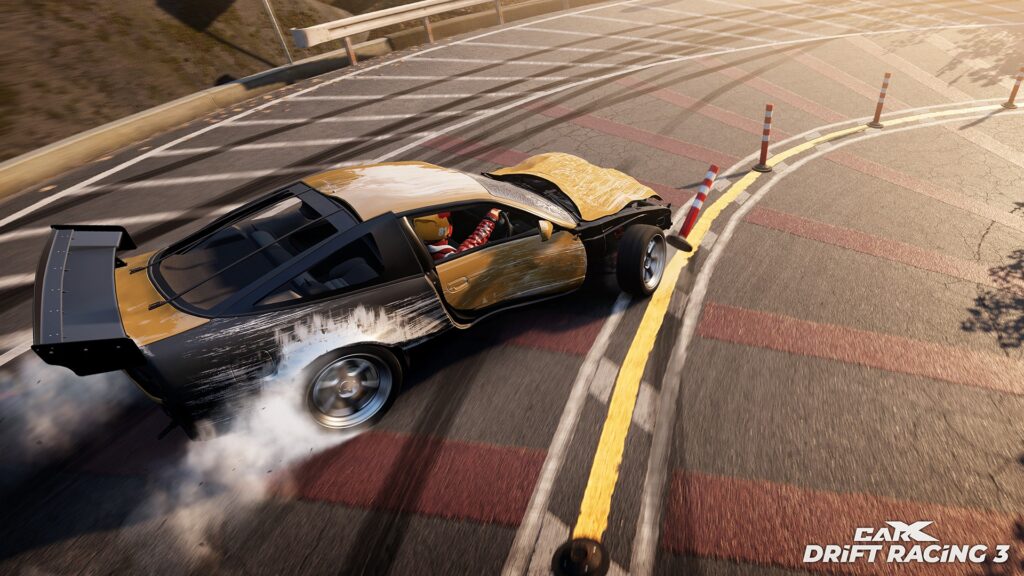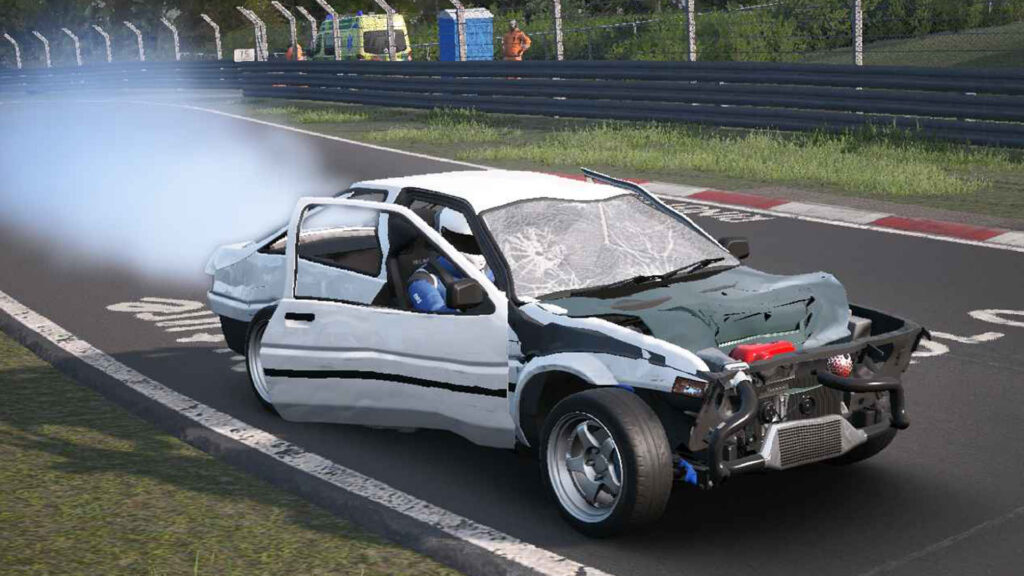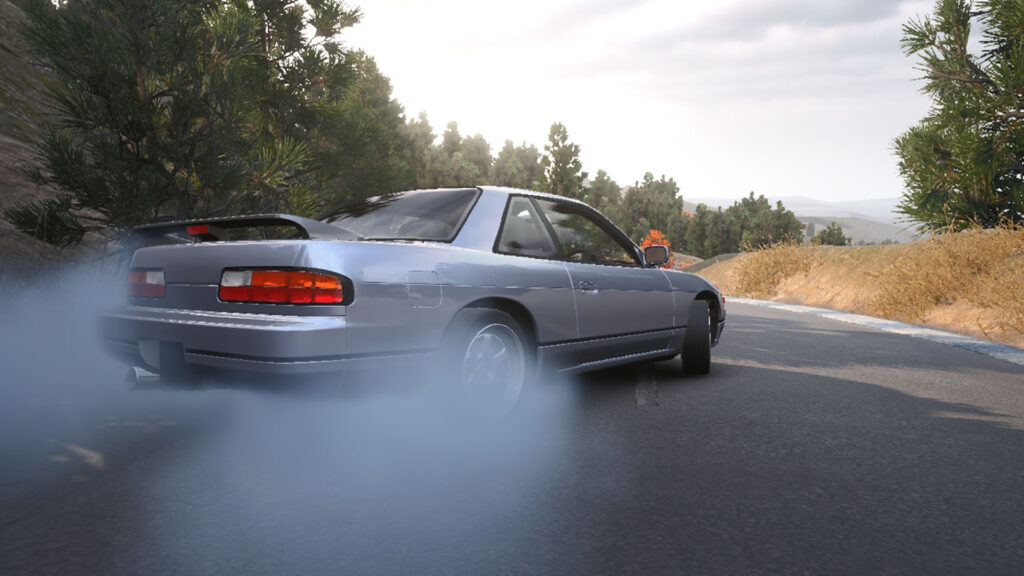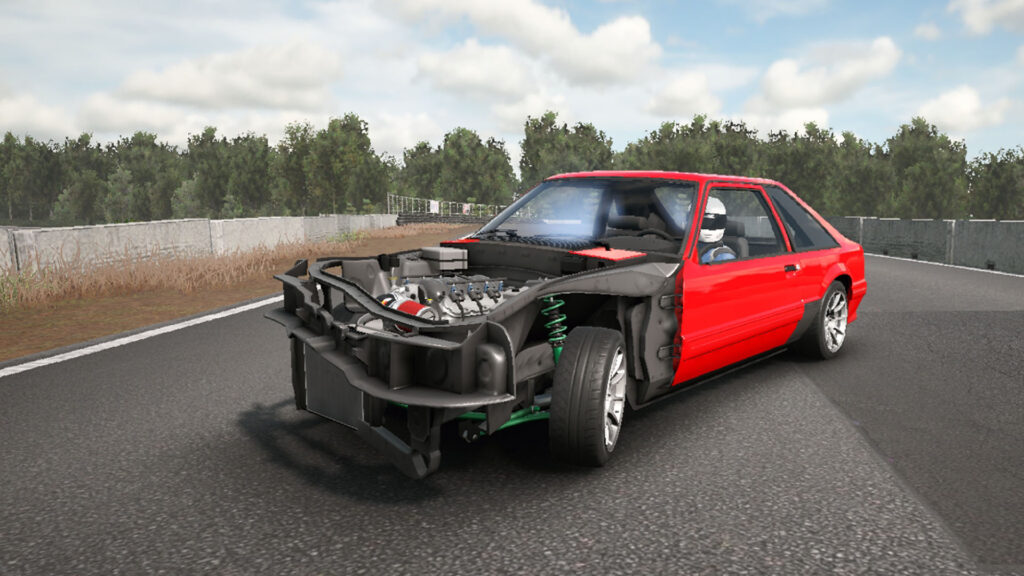Shop sim racing equipment
After a long wait, CarX Drift Racing 3 slides onto iOS and Android devices today (5th December), with PC and console releases set to arrive later.
With millions of downloads, the sideways driving series is incredibly popular, yet it’s taken six years for the long-awaited third entry to arrive.
Free-to-play, recent glimpses of CarX Drift Racing 3 looked promising, with its impressive damage demo video garnering publicity. We’ve been hands-on with the Android version to see if CarX Drift Racing 3 can live up to the hype.
Burning rubber
In terms of controls, CarX Drift Racing 3 can be played with a traditional tilt-steer mode or on-screen touch controls for the accelerator, brake, steering and handbrake.
Bluetooth controllers are also supported, so you can easily connect a PlayStation 5 DualSense, Xbox or Nintendo Switch Pro controller.
Whatever control method you use, the vehicle handling achieves a good balance between accessibility and realism. The physics are forgiving without feeling too floaty, making it easy to initiate a drift and intuitively hold the slide.

There are no licensed cars, but the fictional vehicles closely resemble legendary JDM, European and American cars like the Toyota AE86 Sprinter Trueno from Initial D, Datsun 240Z and fox-body Ford Mustang. Some manufacturers may think they resemble their real-world counterparts too closely…
CarX games are renowned for their in-depth tuning and customisation, and CarX Drift Racing 3 is no exception.

An expanded tuning shop lets you change individual components, from swapping body panels and removing interior seats to save weight to installing new engines. It’s comprehensive, but tuning is restricted to cars bought with credits.
At the start, a few sponsor cars can be accessed in your garage for free. But if you want to buy a new car, you’ll need to do a lot of grinding.
Credit payouts for winning events are slim, and even the cheapest cars are unobtainable in the early stages unless you buy coins with microtransactions. This isn’t unusual for a free-to-play game, but an option to pay an upfront price would be preferable if it reduces the grinding.
Impressive damage modelling for a mobile game
With no manufacturer restrictions, CarX Drift Racing 3 sees the developer debut its new damage model, and it’s very impressive, to say the least.
Bumpers hang loose and detach, glass cracks and shatters, doors flap open and bodywork realistically deforms in crashes, with the damage varying depending on the speed of the impact. Even the headlights can fall out.

While expecting it to be on par with Wreckfest and BeamNG Drive is unreasonable, CarX Drift Racing 3’s damage model is incredibly detailed for a free-to-play mobile game. It sets new standards for mobile drift games and surpasses most modern racing games on PC and console.
It’s not immediately noticeable, but your car’s performance and handling are affected as damage builds up and components wear out, meaning that mistakes have consequences. If your steering gets too damaged, drifting without spinning out is virtually impossible.
It’s a shame, however, that there’s no terminal damage option to punish more serious mistakes. Nevertheless, the crashes are often spectacular and seeing your car crunch and crumple like a tin can is entertaining.
Damaged bodywork and components can be repaired, but this will cost you time unless you speed it up by spending in-game credits. You also can’t access cars when they are being repaired.
Drifting through the decades
CarX Drift Racing 3’s single-player campaign celebrates the history of drift racing, from its humble roots on Japanese mountain roads to international motorsports. The campaign is split into five chapters, each focusing on a different decade starting from the 1980s to the present day.
Inspired by the origins of drift racing in Japan, the 1980s campaign sees you navigate narrow winding roads in time attacks and togue racing events, but drifting isn’t required. Reflecting the rising drift culture scene, the 1990s campaign teaches you the basics of sliding around turns, with a mix of mountain roads and legal competitions on race tracks.
Meanwhile, the 2000s campaign represents an era when drifting evolved into specialised motorsports with international competitions. These events emphasise style, rewarding higher drift angles and side changes.

New game modes and increasingly complex challenges are introduced throughout the campaign. These range from checkpoint races requiring you to drift on specific points of the track, to cone challenges testing your precision driving skills and head-to-head tandem battles.
Playing like an elaborate, tyre-smoking dance, the latter events are particularly challenging, as you can’t get too close or too far from the opponent sliding in front of you.
Progressing through the campaign accumulates fans, gradually unlocking new game modes, tracks and sponsors. For example, acquiring 200 fans unlocks the car shop, while the tandem racing mode unlocks when you acquire 250 fans.
Completing objectives such as finishing within a time limit also earns you rewards such as currency and tuning parts. Typically for a mobile game, these are unlocked by opening cards, some of which launch intrusive full-screen ads for games like Township and Monopoly.
Not enough locations at launch
As for locations, you’ll be drifting on a mix of licensed circuits and fictional mountain roads rather than city streets, including a revamped version of the popular Kami Road course. Unlike CarX Street, there’s no open world, but a free-roam mode lets you burn rubber in any location with no restrictions.
The Nurburgring Nordschleife also makes a surprise appearance, with ten selectable zones such as the famous Karussell, or you can drift around the full circuit while trying not to crash at the notoriously difficult circuit. Other licensed venues include Ebisu, ADM and Dominion Raceway.
With only six tracks at launch, the limited selection of locations can get repetitive, despite each having multiple layouts. Most tracks also need to be downloaded separately.
Hopefully, future updates will expand the track roster. There’s also a track editor, but you’ll need over 800 fan points to access it.

On an Android smartphone with 12GB of RAM and an eight-core processor, CarX Drift Racing 3 struggles to run smoothly on ultra settings. Lowering the graphics to ‘high’ or ‘very high’ improves the performance and it generally runs smoothly, but this is a resource-heavy game that will drain your battery fast.
If you encounter performance issues, we recommend exploring the configuration menu. With options to adjust everything from the shadow quality to the tyre smoke density, optimising the game for different phone specifications should be easy. We also encountered a bug where the game would freeze when restarting a specific event.
The grinding required to afford new cars is excessive, but a genre-defining damage system, a campaign celebrating the history of drift culture and fun sideways driving physics make CarX Drift Racing 3 worth taking for a spin on smartphones. Everything is boding well, with the mobile game giving a tantalising taste of the eventual PC and console ports.





Chat with the Community
Sign Up To CommentIt's completely Free